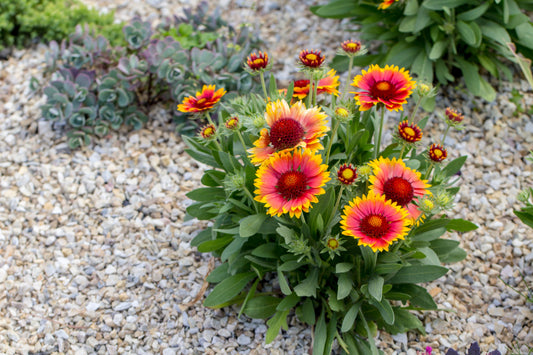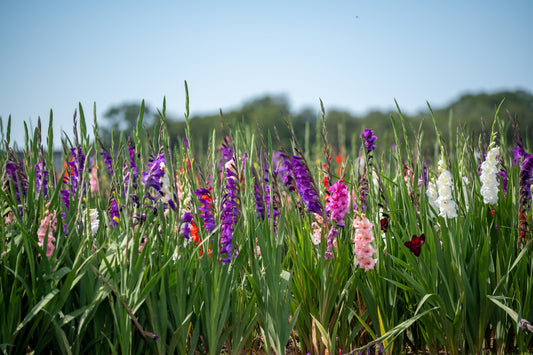Grape Hyacinth (Muscari) Planting & Growing Guide
Planting Guide Information
-
3"Planting Depth
-
3" ApartPlanting Proximity
-
FallPlanting Season
-
Low-growing flowers that do well in borders, containers or landscapes.Plant Benefits
-
ModerateWater Quantity
-
SpringBloom Season
-
Full to Partial SunSunlight Quantity
-
Zones 4-8Hardiness Zones
Additional Growing Information
Where to Plant
Grape Hyacinths are straightforward plants to grow in both containers and outdoor gardens, fancying little more than well-drained soil and a spot with good light. If you notice puddles of water 5–6 hours after a hard rain, scout out another site or amend the soil with organic material to raise the level 2–3 inches. While these beauties aren't particularly fussy about soil, they will not survive in soggy conditions or standing water.
When to Plant
Muscari bulbs should be planted sometime between mid to late fall after the first frost but before the ground freezes. After a few years, most varieties will produce roots and send up foliage in the fall that persists through winter until the flowers arrive in early spring.
How to Plant
- For outdoor landscape planting, find a spot where the soil drains well, and your Muscari plants will receive plenty of sunlight. Full or three-quarter-day sun exposure will yield the best blooms. Dig holes and plant the bulbs 3 to 4" deep and 3" apart, with the small points on the sides facing up.
- For container planting, start with good quality, well-drained potting soil and tall or shallow containers with adequate drainage holes. Dig holes and plant the bulbs 3 to 4" deep and 3" apart, with the small points on the sides facing up.
- Water thoroughly, soaking the soil to settle it around the bulbs.
How to Grow
- Water as needed during active growth periods, with about 1" of moisture per week as a fair estimate.
- Leave the foliage in place after blooming has finished for the season. The leaves will gather sunlight to create food through photosynthesis, strengthening the bulb for the future.
- Remove the dry foliage when the leaves turn yellow and die back late in the spring.
- Allow the bulbs to rest for a few months before beginning the next growing cycle.
Grape Hyacinth Tips & Tricks
- Amend the soil with finely ground bark, decomposed manure, or compost to improve drainage and encourage a healthy start.
- Consider mixing other petite plants, such as Pansies or miniature Daffodils, with your Grape Hyacinths, or tuck them around the ankles of taller plants.
- Feel free to snip a few flowers for tiny, perfect bouquets, as doing so will not hurt your plants.
- Dig up the bulbs and separate them if your Grape Hyacinths begin to get crowded, as this will disrupt flowering. These plants are known to self-seed and spread over time, which is fantastic but needs to be maintained.
- Expect your Muscari plants to perform beautifully for many years on end!
From the Family
-
Muscari - Grape Hyacinth Pink Surprise
10 Muscari BulbsRegular price $11.97Sale price $11.97 Regular priceUnit price per$19.9540% Off -
Muscari - Grape Hyacinth Grape Ice
10 Muscari BulbsRegular price $8.97Sale price $8.97 Regular priceUnit price per$14.9540% Off -
Muscari - Grape Hyacinth Mt. Lady
10 Muscari BulbsRegular price $8.97Sale price $8.97 Regular priceUnit price per$14.9540% Off -
Muscari - Grape Hyacinth Valerie Finnis
10 Muscari BulbsRegular price $4.49Sale price $4.49 Regular priceUnit price per$14.9570% Off -
 40% Off
40% OffMuscari - Grape Hyacinth Blue
30 Muscari BulbsRegular price $11.99Sale price $11.99 Regular priceUnit price per$19.9540% Off








